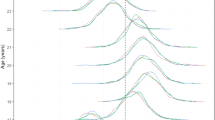Abstract
Chlamydia is the most common sexually transmitted infection in the UK and constitutes a major public health problem. The UK Department of Health is phasing in a National Chlamydia Screening Programme (NCSP) but there is concern that blanket screening of the entire at risk population will simply add extra burden to the already overstretched health economy. This paper demonstrates that certain high-risk sub-groups within the general population are critical in the infection dynamics. Improved targeting of these high-risk populations achieves greater cost-effectiveness. Statistical risk-group clustering techniques have been used to identify indicators that are strong predictors in determining high-risk status while geomapping techniques visually display prevalence geographically across the region, thus identifying high prevalence postcode clusters and informing public health planners where to target intervention and screening strategies. A System Dynamics simulation model has been used to capture the infection dynamics and measure the cost-effectiveness of the intervention strategies. The model incorporates risk-group behaviour as identified by the above geomapping and statistical analysis components of the research. The combined use of computer simulation, statistical analysis and geomapping methodologies has provided a unique holistic view of the problem.














Similar content being viewed by others
References
Addiss DG et al (1993). Decreased prevalence of Chlamydia trachomatis infection associated with a selective screening programme in family planning clinics in Wisconsin. Sex Transm Dis 20: 28–34.
Breiman L et al (1984). Classification and Regression Trees. Chapman & Hall: London.
Buhaug H, Skjeldestad FE, Backe B and Dalen A (1989). Cost effectiveness of testing for Chlamydial infections in asymptomatic women. Med Care 27: 833–841.
Department of Health (2000). Summary Report: A Pilot Study of Opportunistic Screening for Genital Chlamydia trachomatis Infection in England. The Sexual Health and Substance Misuse Team, Department of Health: London.
Department of Health (2005). National Chlamydia Screening Programme (NCSP). www.dh.gov.uk.
Evenden D, Harper PR, Brailsford SC and Harindra V (2005). System dynamics modelling of Chlamydia infection for screening intervention planning and cost benefit estimation. IMA J Man Math 16: 265–279.
Genç M and Mardh PA (1996). A Cost-effectiveness analysis of screening and treatment for Chlamydia trachomatis infection in asymptomatic women. Ann Intern Med 124: 1–7.
Gove DJ (1997). Simulation modelling of infectious diseases. PhD theses, University of Southampton, Southampton, UK.
Gift TL, Walsh C, Haddix A and Irwin KL (2002). A cost-effectiveness evaluation of testing and treatment of Chlamydia trachomatis infection among asymptomatic women infected with Neisseria gonorrhoeae. Sex Trans Dis 29: 542–551.
The Guardian (2004). Just say no to avoid sex infections, young told. 25th November, 2004. http://www.guardian.co.uk/uk_news/story/0,,1358905,00.html.
Haddix AC, Hillis SD and Kassler WJ (1995). The cost effectiveness of azithromycin for Chlamydia trachomatis infections in women. Sex Trans Dis 22: 274.
Harindra V, Tobin JM and Underhill G (2002). Opportunistic chlamydia screening: should positive patients be screened for co-infections? Int J STD AIDS 13: 821–825.
Hart GJ, Duncan B and Fenton KA (2002). Chlamydia screening and sexual health, Editorial. Sex Transm Infect 78: 396–397.
Health Protection Agency (2004). HIV and other Sexually Transmitted Infections in the United Kingdom in 2003. Annual Report, November 2004. http://www.hpa.org.uk/infections/topics_az/hiv_and_sti/sti-chlamydia/chlamydia.htm.
Herrmann B, Johnsson A and Mardh PA (1991). A retrospective study of efforts to diagnose infections by Chlamydia trachomatis in a Swedish county. Sex Transm Dis 18: 233–237.
Hicks NR et al (1999). Chlamydia infection in general practice. BMJ 318: 790–792.
Honey E et al (2002). Cost effectiveness of screening for Chlamydia trachomatis: a review of published studies. Sex Transm Infect 78: 406–412.
Howell MR, Quinn TC and Gaydos CA (1998). Screening for Chlamydia trachomatis in asymptomatic women attending family planning clinics. Ann Intern Med 128: 277–284.
Magid D, Douglas JM and Schwartz JS (1996). Doxycycline compared with azithromycin for treating women with genital Chlamydia trachomatis infections: an incremental cost-effectiveness analysis. Ann Intern Med 124: 389–399.
Pimenta JM et al (2003a). Opportunistic screening for genital Chlamydial infection. I: Acceptability of urine testing in primary and secondary healthcare settings. Sex Transm Dis 79: 16–21.
Pimenta JM et al (2003b). Opportunistic screening for genital Chlamydial infection. II: Prevalence among healthcare attenders, outcome, and evaluation of positive cases. Sex Transm Dis 79: 22–27.
Skaza A and Eržen I (2002). Cost-effectiveness of screening for Chlamydia trachomatis in adolescent females in Slovenia. Dermatovenerologica 11. www.mf.uni-lj.si/acta-apa/
Townshend JRP and Turner HS (2000). Analysing the effectiveness of chlamydia screening. J Oper Res Soc 51: 812–824.
van Valkengoed IGM et al (2001). Cost effectiveness analysis of a population based screening program for asymptomatic Chlamydia trachomatis infections in women by means of home obtained urine specimens. Sex Transm Inf 77: 276–282.
Yeh JM, Hook EW and Goldie SJ (2003). A refined estimate of the average lifetime cost of pelvic inflammatory disease. Sex Transm Dis 30: 369–378.
Author information
Authors and Affiliations
Rights and permissions
About this article
Cite this article
Evenden, D., Harper, P., Brailsford, S. et al. Improving the cost-effectiveness of Chlamydia screening with targeted screening strategies. J Oper Res Soc 57, 1400–1412 (2006). https://doi.org/10.1057/palgrave.jors.2602134
Received:
Accepted:
Published:
Issue Date:
DOI: https://doi.org/10.1057/palgrave.jors.2602134




